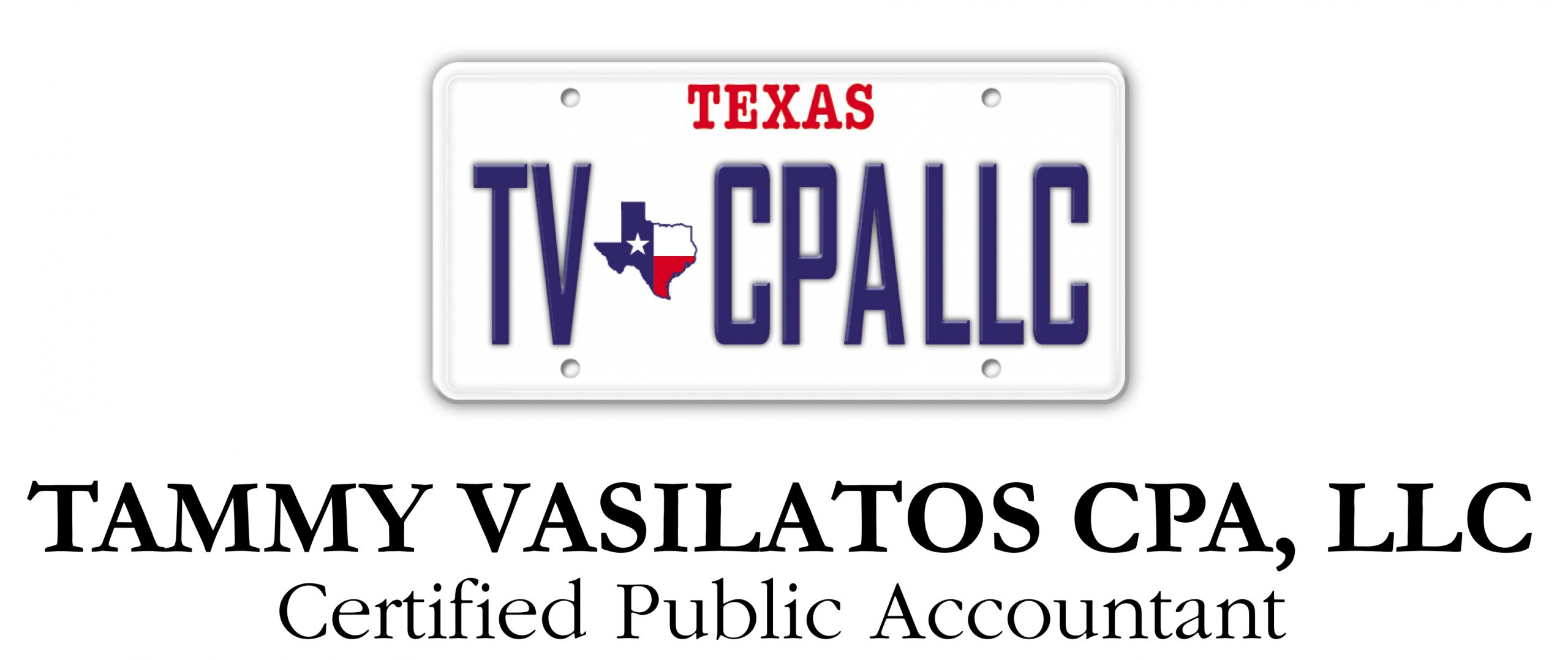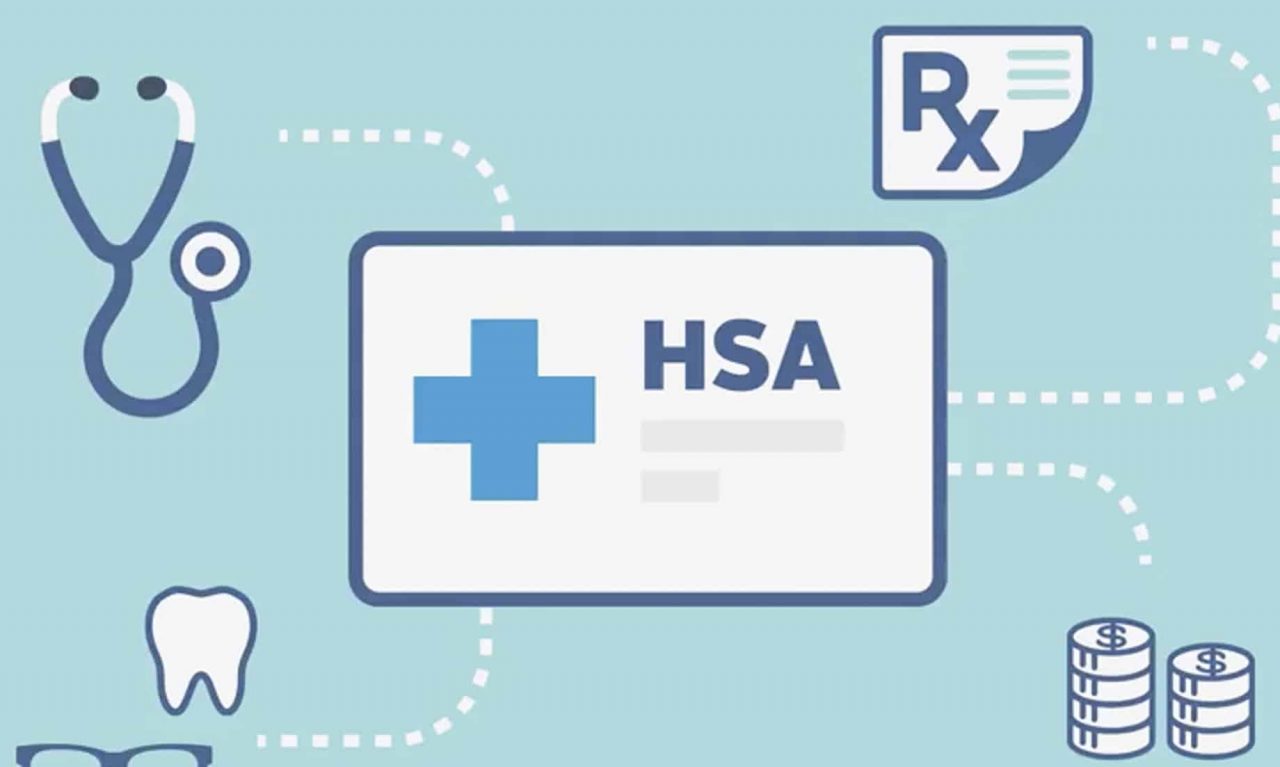Below are details of many of the tax provisions in the One Big Beautiful Bill Act, which was signed into law Friday by President Donald Trump.
The House approved the measure Thursday in a 218-214 vote, after the Senate approved it Tuesday by a 51-50 vote, with Vice President JD Vance casting the tie-breaking vote.
The bill extends many of the expiring provisions from the Tax Cuts and Jobs Act (TCJA), P.L. 115-97. It also addresses other tax priorities of the Trump administration, including providing deductions to eliminate income taxes on certain tips and overtime pay.
The bill also revamps some of the TCJA’s provisions on the taxation of corporations’ foreign income and terminates a large number of clean energy tax incentives.
In a statement, AICPA President and CEO Mark Koziel, CPA, CGMA, called the bill “a win for millions of businesses, taxpayers, and tax practitioners across the country.”
Additionally, Koziel said in the statement: “No bill is perfect — however, there are many beneficial tax provisions in this bill that I believe support the business community and will help grow our economy. The tax provisions in this bill will help facilitate tax planning earlier in the year, which can help reduce the anxiety of the unknown for many taxpayers.”
The AICPA has published charts comparing tax and personal financial planning provisions of the bill with current law (free site registration required).
Provisions for individuals
Tax rates: The bill generally makes the tax rates enacted in 2017 in the TCJA permanent. The bill adds an additional year of inflation adjustment for determining the dollar amounts at which any rate bracket higher than 12% ends and at which any rate bracket higher than 22% begins.
Standard deduction: The bill makes the TCJA’s increased standard deduction amounts permanent. For tax years beginning after 2024, the standard deduction increases to $15,750 for single filers, $23,625 for heads of household, and $31,500 for married individuals filing jointly. The standard deduction will be adjusted for inflation after that. These changes have been made retroactive to include 2025.
SALT cap: The bill temporarily increases the limit on the federal deduction for state and local taxes (the SALT cap) to $40,000 (from the current $10,000) and adjusts it for inflation. In 2026, the cap will be $40,400, and then will increase by 1% annually, through 2029. Starting in 2030, it will revert to the current $10,000.
The amount of the deduction available to a taxpayer phases down for taxpayers with modified adjusted gross income (MAGI) over $500,000 (in 2025). The MAGI threshold will be adjusted for inflation through 2029. The phasedown will reduce the taxpayer’s SALT deduction by 30% of the amount the taxpayer’s MAGI exceeded the threshold, but the limit on a taxpayer’s SALT deduction could never go below $10,000.
The version of the bill that passed the House in May also increased the SALT cap to $40,000, but included provisions to limit taxpayers’ attempt to circumvent the cap, including not allowing specified service trades or businesses (SSTBs) to deduct state and local income taxes. This provision would limit the usefulness of state passthrough entity taxes (PTETs) in avoiding the SALT cap. The Senate Finance Committee’s version of the bill took a different tack and would have limited all passthrough entity owners’ PTET SALT deduction to the unused portion of their SALT deduction plus the greater of $40,000 of their allocation of the PTET or 50% of their allocation of the PTET.
The adopted version of the bill merely increases the SALT cap and does not attempt to limit or address the various workarounds that taxpayers are currently using to avoid the SALT cap. The AICPA had advocated against limiting the use of PTETs.
In the AICPA statement, Koziel said: “We are thankful to the members of Congress who supported millions of businesses’ ability to retain pass-through entity tax SALT deduction and our partners throughout the state CPA societies and other professional service businesses for their diligent advocacy on this important issue.” (For more on this, see “Senate Budget Bill Would Preserve PTET SALT Deduction.”)
Personal exemptions and senior deduction: The Senate bill permanently sets the deduction for personal exemptions at zero. However, it provides a temporary $6,000 deduction under Sec. 151 for individual taxpayers who are age 65 or older. This senior deduction begins to phase out when a taxpayer’s MAGI exceeds $75,000 ($150,000 in the case of a joint return). It will be in effect for the years 2025 through 2028.
Child tax credit: The bill increases the amount of the nonrefundable child tax credit to $2,200 per child beginning in 2025 and indexes the credit amount for inflation. The bill also makes permanent the $1,400 refundable child tax credit, adjusted for inflation. It in addition makes permanent the increased income phaseout threshold amounts of $200,000 ($400,000 in the case of a joint return), as well as the $500 nonrefundable credit for each dependent of the taxpayer other than a qualifying child.
QBI deduction: The bill makes the Sec. 199A qualified business income (QBI) deduction permanent and keeps the deduction rate at 20% (the bill passed by the House would have raised it to 23%). The bill expands the Sec. 199A deduction limit phase-in range for SSTBs and other entities subject to the wage and investment limitation by increasing the $50,000 amount for non-joint returns to $75,000 and the $100,000 amount for joint returns to $150,000.
The bill also introduces an inflation-adjusted minimum deduction of $400 for taxpayers who have at least $1,000 of QBI from one or more active trades or businesses in which they materially participate.
Estate and gift tax exemption amounts: The bill amends Sec. 2010 to permanently increase the estate tax exemption and lifetime gift tax exemption amounts to $15 million for single filers ($30 million for married filing jointly) in 2026 and index the exemption amount for inflation after that.
Alternative minimum tax exemption: The bill permanently extends the TCJA’s increased individual alternative minimum tax (AMT) exemption amounts and reverts the exemption phaseout thresholds to their 2018 levels of $500,000 ($1 million in the case of a joint return), indexed for inflation. However, in a change from the Senate Finance Committee’s version of the bill, the bill increases the phaseout of the exemption amount from 25% to 50% of the amount by which the taxpayer’s alternative minimum taxable income exceeds the threshold amount.
Mortgage interest deduction: The bill permanently extends the TCJA’s provision limiting the Sec. 163 qualified residence interest deduction to the first $750,000 in home mortgage acquisition debt. It also makes permanent the exclusion of interest on home-equity indebtedness from the definition of qualified residence interest. The bill also treats certain mortgage insurance premiums on acquisition indebtedness as qualified residence interest.
Casualty loss deductions: Under the bill, the TCJA’s provision limiting the itemized deduction for personal casualty losses to losses resulting from federally declared disasters becomes permanent, but the bill expands the provision to include certain state-declared disasters.
A letter to four Senate leaders dated June 28 reiterated the AICPA’s appreciation for multiple provisions in the bill and noted the AICPA’s “continued concern” regarding the permanency of the TCJA limitation on such deductions.
“We hope to continue to work with you to find improvements on this issue in any future tax legislation,” the letter said. “That being said, on balance, the legislation that the Senate will consider makes significant improvements to the OBBB that truly promote business growth. With that in mind, we express our strong support for the Senate tax provisions and urge their inclusion in any final version of the OBBB that becomes law.”
Miscellaneous itemized deductions: The bill makes permanent the TCJA’s suspension of the Sec. 67(g) deduction for miscellaneous itemized deductions but removes unreimbursed employee expenses for eligible educators from the list of miscellaneous itemized deductions.
Itemized deductions limitation: The bill permanently removes the Sec. 68 overall limitation on itemized deductions (known as the Pease limitation) and replaces it with a new overall limitation on the tax benefit of itemized deductions. The amount of itemized deductions otherwise allowable would be reduced by 2/37 of the lesser of (1) the amount of the itemized deductions or (2) the amount of the taxpayer’s taxable income that exceeds the start of the 37% tax rate bracket.
Bicycle commuting reimbursements: The bill permanently excludes qualified bicycle commuting reimbursements from the list of qualified transportation fringe and other commuting benefits, making them taxable to employees.
Moving expense deduction: The bill permanently eliminates the Sec. 217 deduction for moving expenses, except for members of the armed forces and certain members of the intelligence community.
Wagering losses: The bill amends Sec. 165(d) to clarify that the term “losses from wagering transactions” includes any deduction otherwise allowable under Chapter 1 of the Code incurred in carrying on any wagering transactions. The bill limits the term “losses from wagering transactions” to 90% of the amount of those losses, and losses will be deductible only to the extent of the taxpayer’s gains from wagering transactions during the tax year.
ABLE accounts: The bill makes various changes to Sec. 529A ABLE accounts, including making permanent the TJCA’s increased limitation on contributions to ABLE accounts. The bill also makes permanent the inclusion of ABLE account contributions as eligible Sec. 25B saver’s credit contributions, but after 2026 only ABLE account contributions will be eligible saver’s credit contributions. The credit amount increases from $2,000 to $2,100. (This increase was not included in the Senate Finance Committee’s version of the bill.)
Student loan debt discharge: The bill makes permanent and makes some adjustments to the Sec. 108(f)(5) provision excluding from gross income student loans that are discharged on account of death or disability. The bill also requires the inclusion of the taxpayer’s Social Security number (SSN) on the relevant income tax return when a student loan is discharged.
No tax on tips: The bill provides a temporary deduction of up to $25,000 for qualified tips received by an individual in an occupation that customarily and regularly receives tips. The deduction will be allowed for both employees receiving a Form W-2, Wage and Tax Statement, and independent contractors who receive Form 1099-K, Payment Card and Third Party Network Transactions, or Form 1099-NEC, Nonemployee Compensation, or who report tips on Form 4317, Social Security and Medicare Tax on Unreported Tip Income. The deduction would be an above-the-line deduction and, therefore, available for taxpayers who claim the standard deduction or itemize deductions. The deduction begins to phase out when the taxpayer’s MAGI exceeds $150,000 ($300,000 in the case of a joint return). This temporary deduction will be available for tax years 2025 through 2028. A transition rule will allow employers required to furnish statements enumerating an individual’s tips for tax year 2025 to use “any reasonable method” to estimate designated tip amounts.
The bill also extends the Sec. 45B credit for a portion of employer Social Security taxes paid with respect to employee cash tips to certain beauty service businesses.
No tax on overtime: The bill provides a temporary above-the-line deduction of up to $12,500 ($25,000 in the case of a joint return) for qualified overtime compensation received by an individual during a given tax year. The deduction begins to phase out when the taxpayer’s MAGI exceeds $150,000 ($300,000 in the case of a joint return). The bill defines qualified overtime compensation as overtime compensation paid to an individual required under Section 7 of the Fair Labor Standards Act of 1938 that is in excess of the regular rate (as used in that section) at which the individual is employed. Overtime deductions would only be allowed for qualified overtime compensation if the total amount of qualified overtime compensation is reported separately on Form W-2 (or Form 1099, if the worker is not an employee). This temporary deduction will be available for tax years 2025 through 2028.
Car loan interest: For the years 2025 through 2028, the bill excludes qualified passenger vehicle loan interest from the definition of personal interest in Sec. 163(h). Qualified passenger vehicle loan interest is defined as interest paid or accrued during tax year on indebtedness incurred by the taxpayer after Dec. 31, 2024, for the purchase of, and that is secured by a first lien on, an applicable passenger vehicle for personal use. Among other restrictions, applicable passenger vehicles must have had their final assembly in the United States.
The exclusion is capped at $10,000 per year and will phase out for taxpayers with MAGI in excess of $100,000 ($200,000 for married taxpayers filing jointly).
Adoption credit: The bill makes a portion (up to $5,000) of the Sec. 23 adoption credit refundable. That amount will be adjusted for inflation.
Dependent care assistance programs: The maximum annual amount excludable from income under a Sec. 129 dependent care assistance program increases from $5,000 to $7,500 under the bill.
Child and dependent care credit: The bill permanently increases the amount of the child and dependent care tax credit from 35% to 50% of qualifying expenses. The credit rate phases down for taxpayers with adjusted gross income (AGI) over $15,000. It will be reduced by 1 percentage point (but not below 35%) for each $2,000 that the taxpayer’s AGI exceeds $15,000. It will then be further reduced by (but not below 20%) 1 percentage point for each $2,000 ($4,000 for joint returns) that their AGI exceeds $75,000 ($150,000 for joint returns).
Trump accounts: The Senate version of the bill takes the House bill’s concept of tax-free savings accounts for minors, called Trump accounts, and revises it to make them a form of individual retirement account (IRA) under Sec. 408(a). Under the bill, Trump accounts will be IRAs (but not Roth IRAs) for the exclusive benefit of individuals under 18. Contributions can only be made in calendar years before the beneficiary turns 18 and distributions can only be made starting in the calendar year the beneficiary turns 18. Trump accounts will have to be designated as such when they are set up, and the bill does not allow Trump account contributions until 12 months after the date of enactment of the bill.
Under the bill, Treasury can set up Trump accounts for individuals that it identifies as eligible and for which no Trump account has already been created.
Eligible investments in Trump accounts would generally be mutual funds and indexed ETFs. Contributions (other than qualified rollover contributions) will be capped at $5,000 a year (adjusted for inflation after 2027). State, local, and tribal governments and charitable organizations could make “general funding contributions,” which would be contributions made to a specified qualified class of Trump account beneficiaries. Qualified classes include beneficiaries under the age of 18, and the general funding contribution can specify geographical areas or specific birth years of beneficiaries whose accounts will receive the contributions.
The bill creates a new Sec. 128 that allows for employer contributions to Trump accounts. These contributions will not be included in the employee’s income.
A new Sec. 6434 creates a Trump accounts contribution pilot program that provides a $1,000 tax credit for opening a Trump account for a child born between Jan. 1, 2025, and Dec. 31, 2028. The bill appropriates $410 million, to remain available through Sept. 30, 2034, to fund Trump accounts.
Credit for contributions to scholarship-granting organizations: The bill enacts a new Sec. 25F that provides a credit of the greater of $5,000 or 10% of the taxpayer’s AGI for charitable contributions to scholarship-granting organizations. The credit comes with a $4 billion annual cap (starting in 2027), and the credit will be allocated on a first-come, first-served basis, up to that cap.
The provision also creates a Sec. 139K, which excludes from income scholarships for the qualified secondary or elementary education expenses of eligible students.
Sec. 529 plans: The bill allows tax-exempt distributions from Sec. 529 savings plans to be used for additional educational expenses in connection with enrollment or attendance at an elementary or secondary school. The bill also allows tax-exempt distributions from 529 savings plans to be used for additional qualified higher education expenses, including “qualified postsecondary credentialing expenses.”
Charitable contribution deduction: The bill creates a charitable contribution deduction for taxpayers who do not elect to itemize, allowing nonitemizers to claim a deduction of up to $1,000 for single filers or $2,000 for married taxpayers filing jointly for certain charitable contributions. For itemizers, the bill imposes a 0.5% floor on the charitable contribution deduction: The amount of an individual’s charitable contributions for a tax year is reduced by 0.5% of the taxpayer’s contribution base for the tax year. For corporations, the floor will be 1% of the corporation’s taxable income, and the charitable contribution deduction cannot exceed the current 10%-of-taxable-income limit.
Business provisions
Bonus depreciation: The bill permanently extends the Sec. 168 additional first-year (bonus) depreciation deduction. The allowance is increased to 100% for property acquired and placed in service on or after Jan. 19, 2025, as well as for specified plants planted or grafted on or after Jan. 19, 2025.
Sec. 179 expensing: The bill increases the maximum amount a taxpayer may expense under Sec. 179 to $2.5 million, reduced by the amount by which the cost of qualifying property exceeds $4 million.
Research-and-development expenses: The bill allows taxpayers to immediately deduct domestic research or experimental expenditures paid or incurred in tax years beginning after Dec. 31, 2024. However, research or experimental expenditures attributable to research that is conducted outside the United States will continue to be required to be capitalized and amortized over 15 years under Sec. 174.
Small business taxpayers with average annual gross receipts of $31 million or less will generally be permitted to apply this change retroactively to tax years beginning after Dec. 31, 2021. And all taxpayers that made domestic research or experimental expenditures after Dec. 31, 2021, and before Jan. 1, 2025, will be permitted to elect to accelerate the remaining deductions for those expenditures over a one- or two-year period.
Limitation on business interest: The bill reinstates the EBITDA limitation under Sec. 163(j) for tax years beginning after Dec. 31, 2024. Therefore, for purposes of the Sec. 163(j) interest deduction limitation for these years, adjusted taxable income would be computed without regard to the deduction for depreciation, amortization, or depletion. The bill would also modify the definition of “motor vehicle” to allow interest on floor plan financing for certain trailers and campers to be deductible.
Paid family and medical leave credit: Under the bill, Sec. 45S is amended to make the employer credit for paid family and medical leave permanent.
Special depreciation allowance for qualified production property: The bill allows an additional first-year depreciation deduction equal to 100% of the adjusted basis of “qualified production property.” Qualified production property is generally nonresidential real property used in manufacturing.
Advanced manufacturing investment credit: Under the bill, the advanced manufacturing investment credit rate increases from 25% to 35%, effective for property placed in service after Dec. 31, 2025. (The Senate Finance Committee version of the bill had proposed increasing the rate to 30%.)
Spaceports: The bill amends Sec. 142(a)(1) to ensure spaceports are treated like airports under the exempt-facility bond rules. A spaceport is defined as a facility close to a launch or reentry site that is used to manufacture, assemble, or repair spacecraft or space cargo or is used for flight control operations, to provide launch or reentry services, or to transfer crew, spaceflight participants, or space cargo to or from a spacecraft. This is a new provision that was not in the Senate Finance Committee’s version of the bill.
Employer-provided child care credit: The bill increases the amount of qualified child care expenses taken into account for purposes of the Sec. 45F employer-provided child care credit from 25% to 40%. The maximum amount of the credit increases from $150,000 to $500,000 ($600,000 for eligible small businesses) and will be adjusted for inflation.
Opportunity zones: The bill makes opportunity zones permanent but with several changes, including narrowing the definition of “low-income community.” The changes would generally take effect Jan. 1, 2027.
New markets tax credit: The bill makes the Sec. 45D new markets tax credit permanent.
Percentage-of-completion method: The bill provides an exception to the Sec. 460(e) requirement to use the percentage-of-completion accounting method for certain residential construction contracts entered into after the date of the bill’s enactment.
Qualified small business stock: The bill increases the Sec. 1202 exclusion for gain from qualified small business stock. For qualified small business stock acquired after the date of enactment of the bill and held for at least four years, the percentage of gain excluded from gross income will rise from 50% to 75%. If it is held for five years or more, the exclusion percentage will go up to 100%.
Excess business losses: The bill makes Sec. 461(l)(1) limitation on excess business losses of noncorporate taxpayers permanent. It was scheduled to expire after 2028. Language in the Senate Finance Committee version of the bill would have treated carried over excess business losses as excess business losses, and therefore subject to the Sec. 461(l) limitation, rather than as net operating losses (NOLs), which are not subject to Sec. 461(l). That language was dropped from the final bill.
Clean energy incentives
The bill terminates a large number of clean energy tax incentives:
-
- Sec. 25E previously owned clean vehicle credit (terminates after Sept. 30, 2025);
- Sec. 30D clean vehicle credit (terminates for vehicles acquired after Sept. 30, 2025);
- Sec. 45W qualified commercial clean vehicle credit (terminates after Sept. 30, 2025);
- Sec. 30C alternative fuel vehicle refueling credit (terminates after June 30, 2026);
- Sec. 25C energy-efficient home improvement credit (terminates after Dec. 31, 2025);
- Sec. 25D residential clean energy credit (terminates for expenditures made after Dec. 31, 2025);
- Sec. 179D energy-efficient commercial buildings deduction (terminates for property the construction of which begins after June 30, 2026);
- Sec. 45L new energy-efficient home credit (terminates after June 30, 2026);
- Sec. 45V clean hydrogen production credit (terminates after Jan. 1, 2028); and
- Sec. 6426(k) sustainable aviation fuel credit (terminates after Sept. 30, 2025).
The Sec. 168(e)(3)(B)(vi) provision allowing cost recovery for certain energy property and qualified clean energy facilities, property, and technology will be terminated after Dec. 31, 2025, for energy property and after the date of enactment for qualified clean energy facilities, property, and technology.
The bill places restrictions on claiming the Sec. 45U nuclear power production credit for foreign entities and for facilities that use imported nuclear fuel.
The Sec. 45Y clean electricity production credit is terminated for wind and solar facilities placed in service after Dec. 31, 2027. No credit will be allowed to facilities that are owned or controlled by certain foreign entities. The Sec. 48E clean electricity investment credit is also terminated for wind and solar facilities placed in service after Dec. 31, 2027. Restrictions are also placed around claims by facilities owned or controlled by certain foreign entities.
The Sec. 45Z clean fuel production credit is extended through 2029, and prohibitions are placed on the use of foreign feedstocks.
International provisions
Foreign tax credit limitation: The Senate Finance Committee version of the bill would have limited the deductions of a U.S. shareholder allocable to income in the global intangible low-tax income (GILTI) category when determining its foreign tax credit limitation. It would also have modified the determination of deemed paid credit for taxes properly attributable to tested income and change the rules for sourcing certain income from the sale of inventory produced in the United States. The adopted bill revises that provision and treats those deductions as allocable to “net CFC tested income” (which is what the bill turns GILTI into, see below).
Deemed paid credit: The bill amends Sec. 960(d)(1) to increase the deemed paid credit for Subpart F inclusions from 80% to 90%.
GILTI and FDII: The bill decreases the Sec. 250 deduction percentage for tax years beginning after Dec. 31, 2025, to 33.34% for foreign-derived intangible income (FDII) and 40% for GILTI, resulting in an effective tax rate of 14% for both FDII and GILTI. The bill also proposes changing the definition of deduction-eligible income for purposes of determining FDII. The bill also eliminates the use of a corporation’s deemed tangible income return for determining FDII and the use of net deemed tangible income return in determining GILTI. These changes result in the elimination of the terms FDII and GILTI, which will be renamed “foreign-derived deduction eligible income” and “net CFC tested income,” respectively.
BEAT: The bill increases the base-erosion and anti-abuse tax (BEAT) rate from 10% to 10.5% (the Senate Finance Committee version would have increased it to 14%). Other BEAT changes that were included in the Senate Finance Committee version have been eliminated.
Business interest limitation: The bill provides that the Sec. 163(j) business interest limitation will be calculated prior to the application of any interest capitalization provision.
Remedies against unfair foreign taxes: The provision of the Senate Finance Committee version of the bill that would have enacted a new Sec. 899 to impose increased rates of tax (up to 15%) on certain affected taxpayers connected to countries that are deemed to impose unfair foreign taxes was dropped from the final bill.
Administrative provisions and excise taxes
Third-party network transaction reporting threshold: The bill reverts to the prior rule for Form 1099-K reporting, under which a third-party settlement organization is required to report, unless the aggregate value of third-party network transactions with respect to a participating payee for the year exceeds $20,000 and the aggregate number of such transactions with respect to a participating payee exceeds 200. The threshold had been phasing down and was scheduled to be $600 starting next year.
Form 1099 reporting threshold: The bill increases the information-reporting threshold for certain payments to persons engaged in a trade or business and payments of remuneration for services to $2,000 in a calendar year (from $600), with the threshold amount to be indexed annually for inflation in calendar years after 2026.
Firearms transfer tax: The bill reduces the Sec. 5811 transfer tax on certain firearms.
Farmland sales: The bill adds a new Sec. 1062 that allows income tax resulting from the sale of farmland to a qualified farmer to be paid in four annual installments. This is a new provision.
Litigation financing: The bill as originally considered would have imposed a 31.8% tax on “qualified litigation proceeds” received by a “covered party,” as defined in the bill. That provision was dropped from the final bill.
Remittance transfer tax: The bill imposes a 1% tax on “remittance transfers,” imposed on the sender. A remittance transfer for these purposes is a transfer of cash, a money order, a cashier’s check, or similar physical instrument. It does not include funds withdrawn from an account held with a financial institution or charged to a credit or debit card.
Under Section 919(g) of the Electronic Fund Transfer Act, a remittance transfer is an electronic transfer of funds requested by a sender to a designated recipient that is initiated by a remittance transfer provider. A remittance transfer provider is any person or financial institution that provides remittance transfers for consumers in the normal course of its business, whether or not the consumer holds an account with the financial institution.
The Senate Finance Committee version of the bill would have imposed a 3.5% tax on such transfers.
Employee retention credit enforcement: The bill requires employee retention credit (ERC) promoters to comply with due diligence requirements with respect to a taxpayer’s eligibility for (or the amount of) an ERC. The bill applies a $1,000 penalty for each failure to comply. It also extends the penalty for excessive refund claims to employment tax refund claims. It also prevents the IRS from issuing any additional unpaid claims under Sec. 3134, unless a claim for a credit or refund was filed on or before Jan. 31, 2024.
SSN requirements: The bill imposes an SSN requirement for claiming an American opportunity or lifetime learning credit under Sec. 25A.
EITC program: The Senate Finance Committee version of the bill proposed creating an earned income tax credit (EITC) certification program to allow the IRS to detect and manage duplicative EITC claims. That proposal was dropped from the bill.
Penalties for unauthorized disclosure of taxpayer information: A proposal in the Senate Finance Committee version of the bill to increase the Sec. 7213 penalties for unauthorized disclosure of taxpayer information was also removed.
— Alistair M. Nevius, J.D., is a freelance writer in North Carolina. To comment on this article or to suggest an idea for another article, contact Neil Amato at Neil.Amato@aicpa-cima.com.






